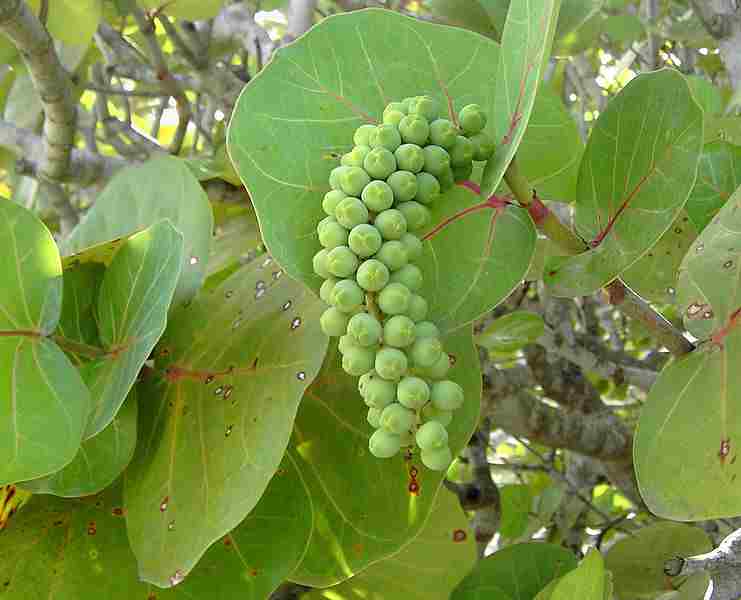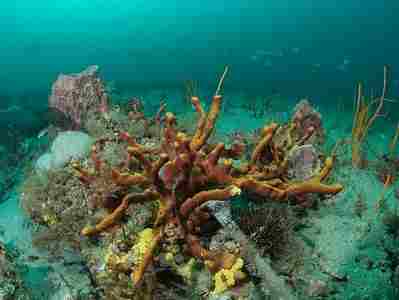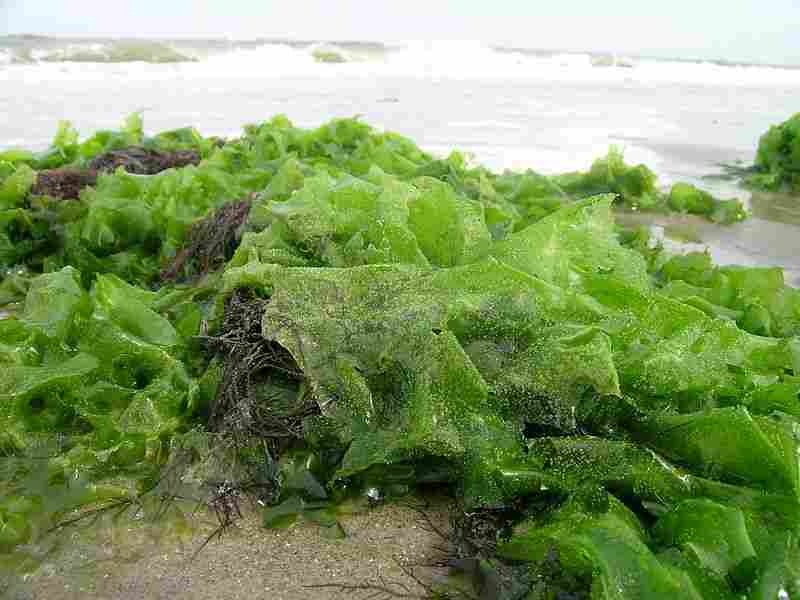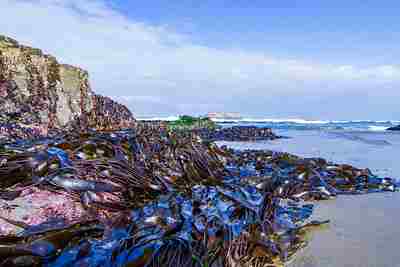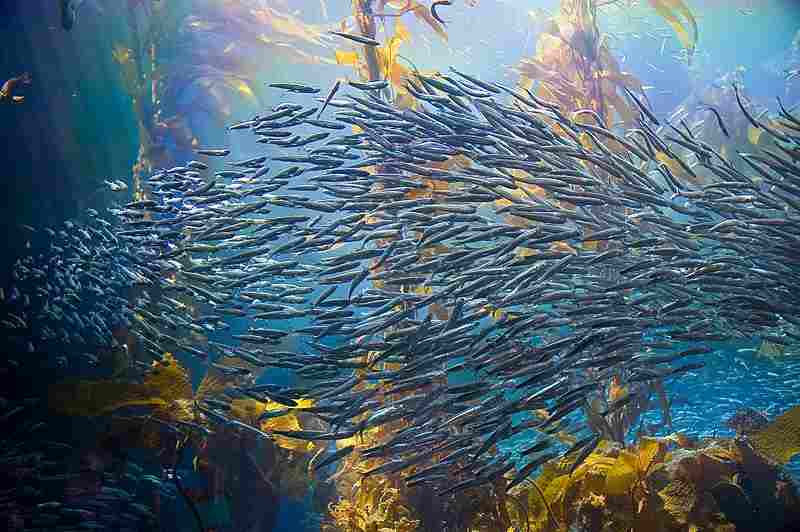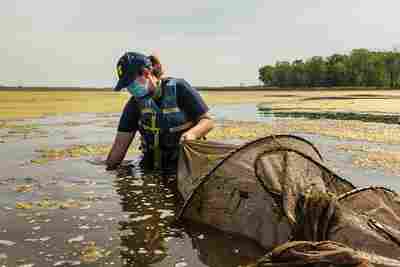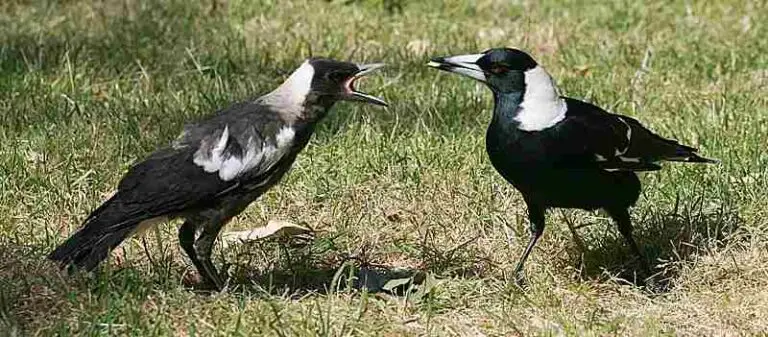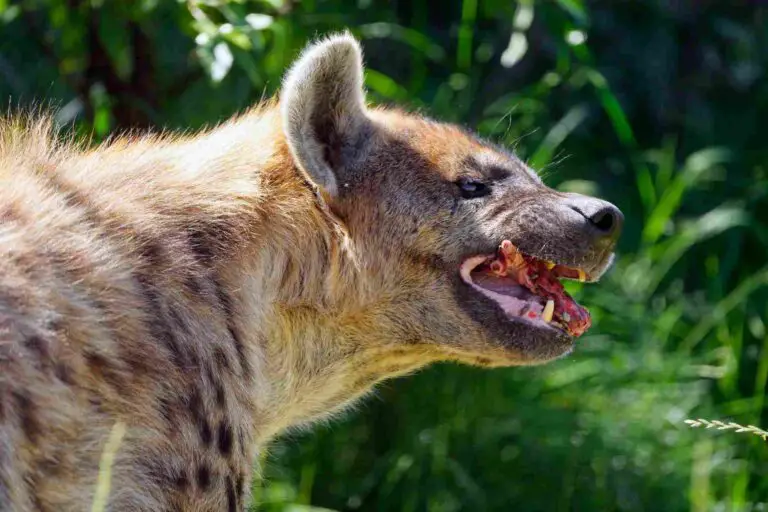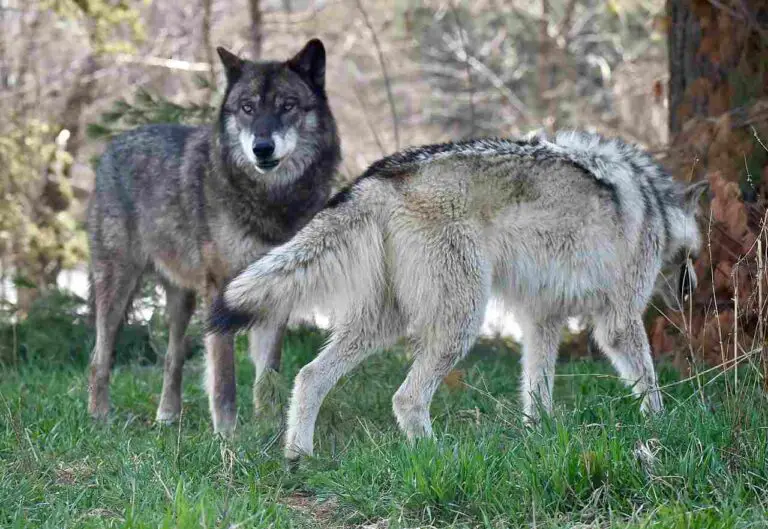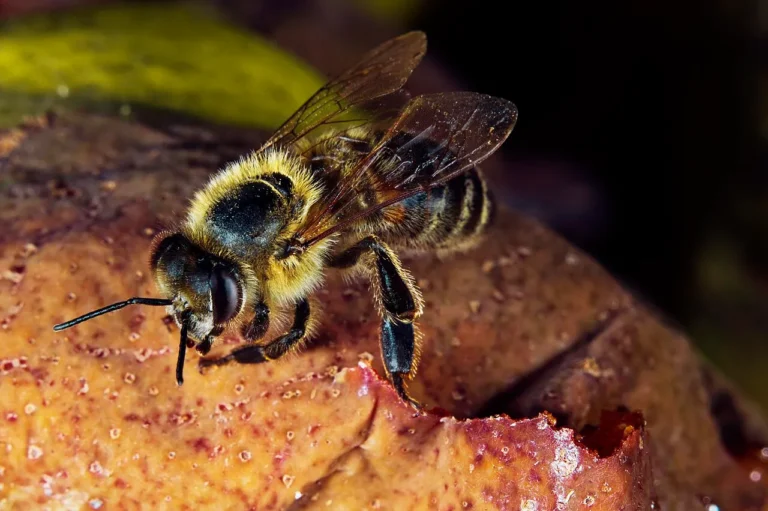7+ Plants in the Intertidal Zone and Their Characteristics
Plants in the intertidal zone include; common eelgrass, surfgrass, sea grape tree, red mangrove, giant kelp, sea lettuce, dead man's fingers, oarweed, and sea palm.
This article discusses plants in the intertidal zone and their characteristics, as follows;
-True Plants in the Intertidal Zone
1). Surfgrass (as one of the Plants in the Intertidal Zone)
Eelgrass, scientifically referred to as Zostera marina [1], is an important plant species that thrives in intertidal and subtidal areas of estuaries, coves and shallow bays, which span across temperate climates of the world.
This plant is very vital in coastal ecosystems as a primary producer, where it contributes to the biological vitality and sustainability of such habitats.
Functions of Eelgrass in the Intertidal Zone
Functions of eelgrass in the intertidal zone include habitat and shelter provision, nutrient cycling, erosion control, and carbon sequestration. These functions are discussed within this section.
Eelgrass provides shelter and an inhabitable microclimate for various marine animals, including juvenile fish, as well as invertebrates like mollusks ad crustaceans. These species rely on the eelgrass meadows for protection from predators, while some also utilize it as a source of food [4].

In terms of the recycling of nutrients, eelgrass can be said to function as a nutrient filter, by absorbing nutrients such as phosphorus and nitrogen from the water. This function helps to maintain the quality of water, while preventing excess nutrients from accumulating and causing harmful algal blooms in coastal regions.
Eelgrass meadows are known to stabilize sediments with their root systems, thereby reducing both localized weathering and coastal erosion by restricting soil movement and preventing the soil from being washed away by water currents and waves.
Lastly, eelgrass acts as a carbon sink, and stores significant amounts of carbon in its tissues as biomass, as well as in the sediments where it grows. This makes it an important contributor to the mitigation of climate change, by sequestering carbon dioxide (a greenhouse gas) from the atmosphere.
Adaptations of Eelgrass to the Intertidal Zone
Eelgrass has evolved multiple adaptations to thrive in the intertidal zone, including salinity tolerance, flexible leaf morphology, and effective anchorage mechanism.
With regards to salinity tolerance, eelgrass is capable of tolerating drastic changes in salinity that occur with the rise and fall of tides.
The extensive, narrow, and ribbon-shaped leaves of eelgrass plant, allow it to capture solar radiation efficiently for photosynthesis even during high tides, and they can bend without breakage when impacted by strong water currents.
Eelgrass spreads through underground rhizomes, that enable it to anchor itself in loose and unstable sediments, and grow to form dense meadows.
Additional Notes on the Habitat, Features and Common Name of Eelgrass
Eelgrass can be found in subtropical and temperate coastal areas around the world, especially in intertidal and subtidal segments of coves, estuaries, and bays. It prefers protected shoreline zones, with sandy or muddy substrates, but can also grow in exposed subtidal flats.
Features of eelgrass include extensive leaves with rounded tips, and well-developed rhizomes that support a dense growth pattern. Further description is given as follows;
Eelgrass is a grass-like flowering plant with dark green, long, narrow leaves that measure 20-55 cm in length, although its leaves may occasionally grow beyond this range up to 2 meters long. The leaves are also typically rounded at their tips.
Eelgrass forms dense meadows within its preferred habitats, which contribute to its ecological function and significance.
The common name for Zostera marina is "eelgrass," which reflects its resemblance to submarine grasses.
2). Seagrape Tree
The sea grape tree, scientifically called Coccoloba uvifera, is a significant species of plant that grows in the intertidal zone, especially in tropical coastal regions. It is renowned for its unique characteristics and is often essential in its functions within the ecosystem.
Functions of the Sea Grape Tree in the Intertidal Zone
In the intertidal zone, sea grape trees function as stabilizers of the shoreline, natural microhabitats, autotrophic producers, and enhancers of regional species richness through the attraction of wildlife.
Sea grape trees contribute significantly to shoreline stabilization. They posses extensive root systems that help to hold the soil firmly in place, thereby preventing erosion caused by tidal forces and intense wave action.
Being a chlorophyllous plant, the sea grape tree is a primary producer within the intertidal zone. Through photosynthesis, it converts light from the sun into chemical energy, and provides resource in the form of organic matter for heterotrophs in higher trophic levels of the food chain.
Female sea grape trees typically produce clusters of grapes [6] that are often serve as a valuable food source for various wildlife, including insects and birds which they attract. By attracting these animals, the tree enhances local biodiversity within the area.

The sea grape tree has a broad and rounded canopy that provides shade from for creatures that live in the intertidal zone, offering them refuge from both solar heat and predators.
Reiteration of The Habitat, Features and Common Name of the Sea Grape
The sea grape tree typically thrives in tropical intertidal regions, with concentrated occurrence along coastal areas in places like Southern Florida and other tropical/subtropical zones around the world. It is known for its capability to thrive in environments that are characterized by high salinity and exposure to saline water.
Features of the sea grape tree include its distinctive appearance, preferred growth conditions, and fruits.
The sea grape tree is characterized by its rounded or vase-shaped structure. It is capable of growing to heights of 25 to 35 feet.
As stated earlier, female sea grape trees produce grapes, which occur as clusters of small fruits that resemble traditional grapes. These fruits are a distinctive feature of the tree and also a valuable food source for various wildlife.
The sea grape tree is commonly referred to as the "sea grape" due to the grape-like appearance of its fruit clusters.
3). Red Mangrove (as one of the Plants in the Intertidal Zone)
Red mangroves (Rhizophora mangle) are a group of salt-tolerant trees that typically thrive in the intertidal zone, so that they can be described as a vital biotic component of coastal ecosystems. These trees serve different functions within their habitat, and are effective in their role as primary producers. They often signify the transition from marine to brackish wetland conditions.
Functions of Red Mangroves in the Intertidal Zone
Functions of red mangroves in the intertidal zone include stabilization and erosion control, habitat creation, primary production, and water filtration.
Red mangroves characteristically possess complex anchorage systems that comprise of distinctive prop roots [2]. These roots secure the tree in loose and muddy substrates and also help to stabilize coastal soils, reducing erosion caused by waves and tidal action.
The tangled mass of prop roots and branches of red mangroves, usually provides shelter and viable breeding sites for a wide variety of marine organisms, including fish, crabs, and aquatic mollusks. These mangrove habitats are nurseries for several commercially important species.
As autotrophic feeders, red mangroves are primary producers in the intertidal zone. Through photosynthesis, they convert solar radiation into bioenergy and produce organic matter, which constitutes the basis of the food web in coastal ecosystems.
Lastly, the dense root systems of red mangroves act as natural water purification tools, that filter out sediments and trap organic materials, thereby improving water quality within the surrounding area. They also absorb excess nutrients and help to prevent nutrient pollution/eutrophication.
Basic Characteristics of Red Mangroves
The basic characteristics of red mangrove include their prop roots and their distinctive red coloration.
Red mangroves are characterized by their unique prop roots. These arching, stout roots emerge from the trunk and usually extend above the surface of the water, thereby providing mechanical stability and support for the tree.
They also contain air-filled spaces referred to as lenticels, which connect with underground root structures to facilitate gas exchange [5].
Red mangroves get their name from the bright red color of the woody tissue beneath their bark. This distinctive coloration is visible in the bark of the main trunk, as well as in the prop roots and the plant. It serves as an evolutionary adaptation to their saline environment, although its specific purposes are yet to be well defined.
Additional Notes and Reiterations On the Characteristics and Distribution of Red Mangroves
Red mangroves are mainly found in subtropical and tropical regions worldwide. Within the United States, they are native to Florida, the Virgin Islands, and Puerto Rico. Additionally, they can be found occurring as an exotic species in Hawaii. They typically grow at or near sea level, in marginal areas along the shoreline, within the intertidal zone.
These mangrove plants are called "red" mangroves due to the bright red coloration of some of their tissues. This characteristic red coloration is especially pronounced in the main trunk and prop root segments, and gives the tree its distinctive appearance.
-Algae in the Intertidal Zone
Algae in the intertidal zone include; giant kelp, sea lettuce, dead man's fingers, oarweed, and sea palm. While these are not true plants, they are often listed in studies of intertidal plant species. They are also discussed here among plants in the intertidal zone.
4). Giant Kelp
Giant kelp, scientifically referred to as Macrocystis pyrifera, is a prominent marine primary producer that is crucial as a component of coastal ecosystems.
It is not a true plant but rather a type of kelp (macroalgae) that grows in the cold coastal waters of various regions around the world. Its functions as a primary producer within the intertidal zone, are essential for maintaining the vitality and biodiversity of these habitats.
Functions of Giant Kelp as a Primary Producer in the Intertidal Zone
As a primary producer, the functions of giant kelp within the intertidal zone include photosynthetic biomass production, habitat provision, nutrient cycling, and oxygen production.
Giant kelp is a photosynthetic organism that converts light energy from the sun into chemical energy. It uses this energy to produce organic matter through the process of photosynthesis, making it a primary source of food for several marine organisms in the intertidal zone.
Also, giant kelp forms dense underwater forests just offshore, in water temperatures that range from 5.0 to 25.0 °C) [3]. These kelp forests serve as critical meso-habitats and shelters for a wide range of marine life, including other algal species, as well as fish, and various invertebrates. Many species rely on the physical structure and protection provided by giant kelp to survive.
Giant kelp contributes to nutrient cycling in the coastal environment. It absorbs essential nutrients from the water column, thereby helping to regulate nutrient levels and maintain local water quality. These nutrients are made available to other organisms when kelp matter is either consumed or undergoes biodegradation.
The ecological function of giant kelp also extends to the oxygen cycle. Through photosynthesis, the giant kelp alga releases oxygen into the water, benefiting not only the organisms that inhabit the kelp forest, but also other marine life in the surrounding area.
Additional Notes On the Occurrence and Distribution of Giant Kelp
Giant kelp is found in various regions with cold coastal waters, including South America, western North America, South Africa, New Zealand, and Southern Australia.
It tends to form extensive underwater forests in these areas, which typically grow at depths of up to 30.5 meters (100 feet). Along the Eastern Pacific Coast, giant kelp forests stretch from Canada and Alaska to the waters of Baja California.
Giant kelp primarily grows in water that is typically below the intertidal zone in depth. It is most commonly found in subtidal regions, where it forms its characteristic underwater forests. While it does not typically inhabit the intertidal zone, it is neither uncommon to find extensive kelp beds stretching into the intertidal environment from adjacent areas. Also, lower portions of the intertidal zone may be home to other types of macroalgae and kelp species.
5). Sea Lettuce (as one of the Plants in the Intertidal Zone)
Sea lettuce (Ulva lactuca) is a marine alga that often thrives in the intertidal zone, where it has important functions as a primary producer, toward the sustenance of this ecosystem.
Functions of Sea Lettuce in the Intertidal Zone
The functions of sea lettuce within the intertidal zone include primary production, habitat/shelter provision, nutrient cycling, and oxygen production. Most autotrophs in intertidal habitats have these basic functions, as can be observed in their repetition throughout the article.
Sea lettuce is a primary producer, which uses photosynthesis to convert sunlight into energy and organic matter. This process creates a vital food source for various marine organisms in the intertidal environment.
By attaching to substrate such as rocks, sedimentary aggregates, shell fragments, and other seaweeds, sea lettuce creates a habitat for small invertebrates like crustaceans, as well as juvenile fish [7]. These organisms seek refuge in, and may feed on sea lettuce.
Sea lettuce contributes to the cycling of nutrients by absorbing these nutrients in solute form, from the water, which helps to maintain nutrient levels and water quality in the ecosystem.
Lastly, like other photosynthetic organisms, sea lettuce releases oxygen into the water during its photosynthetic activity, to the benefit of aerobic organisms within the intertidal zone.
Characteristics of Sea Lettuce
Characteristics of sea lettuce include their distinctive green coloration and leaf morphology.
Sea lettuce is bright green in color, with ruffle-edged and lobe-shaped leaves that resemble the leaves of traditional lettuce plants. These leaves can grow up to 45 centimeters and above in length.
The leaves of most forms of sea lettuce are only one or two cells thick, which gives them a translucent and delicate appearance with perforated holes and tattered edges.

Additional Notes, Reiterations On the Distribution, Habitat and Common Name of Sea Lettuce
Sea lettuce is a highly adaptable autotroph and can grow at all levels of the intertidal zone. It tends to thrive on the upper beach; which is an area frequently exposed to sunlight and air.
Places where sea lettuce can be found include areas along coastlines, within estuaries, as well as in brackish water. Because the sea lettuce requires sunlight for photosynthesis, it typically does not grow in very deep water. It attaches itself to various substrates to withstand water surges, but may also detach and exist as free-floating vegetative masses.
Sea lettuce is named for its bright green color and the appearance of its leaves, which resemble traditional lettuce leaves. This common name reflects its resemblance to terrestrial lettuce while also highlighting its marine habitat.
6). Dead Man's Fingers
Dead man's fingers, scientifically known as Codium fragile, is a notable type of seaweed that is found in the subtidal and intertidal zones of coastal regions. While it is not a plant in the traditional sense, it has a unique autotrophic role in the marine ecosystem.
Functions of Dead Man's Fingers Within the Intertidal Zone
Three ways in which dead man's fingers are useful to the intertidal rocky shores are; habitat and shelter provision, nutrient cycling, and wave absorption.
Dead man's fingers usually form dense, spongy clumps that dangle from rock substrates within the intertidal zone. These clumps provide shelter and habitat for a variety of small marine organisms, including mollusks and crustaceans, as well as other algae. Such organisms seek refuge within the tangled structure of the seaweed.
As a photosynthetic organism, Codium fragile contributes to the cycling of nutrients in the intertidal ecozone. It absorbs essential nutrients from the water, and helps to regulate nutrient levels while supporting the overall vitality of the ecosystem.
The spongy structure of dead man's fingers can help to absorb wave energy, thereby reducing the impact of strong currents and intermittent waves on the coastline. This can be particularly helpful in areas prone to severe erosion.
Basic Characteristics of Dead Man's Fingers
The basic characteristics of dead man's fingers include their distinctive appearance, and variable coloration. These factors are elaborated as follows;
Dead man's fingers have a distinctive appearance, possessing branches that are rounded, plump, and finger-like. These branches are capable of growing up to one meter in length, and originate from a central fleshy mass.
The algae can display various shades of green, depending on factors like environmental conditions and its age.
Additional Notes and Reiterations
Dead man's fingers, or Codium fragile, can be found in subtidal and intertidal zones, in coastal areas worldwide.
They typically attach themselves to rocks, fragmented shells and other substrates in the intertidal zone, where they can be submerged during low tide and exposed to air during low tide.
The name "dead man's fingers" likely originates from the appearance of the seaweed, as the finger-like, plump branches can resemble the fingers of a hand when they dangle from rocks or are washed up on sandy shores.
7). Oarweed (as one of the Plants in the Intertidal Zone)
Oarweed, scientifically known as Laminaria digitata, is a type of seaweed that commonly occurs in the intertidal zone as well as the subtidal areas of coastal regions.
Oarweed has multiple important functions as an alga and primary producer in the intertidal ecosystem. Some of these are discussed in the following subsection.
Functions of Oarweed in the Intertidal Zone
Functions of oarweed in the intertidal zone include; primary production, habitat and shelter provision, nutrient cycling, and wave absorption.
Oarweed is a primary producer, which utilizes photosynthesis as a means to convert sunlight into chemical energy and organic matter. As a result, it contributes to the foundation of the aquatic food web in the intertidal ecosystem, by providing a viable source of food for herbivorous marine organisms.
Oarweed is known to form extensive underwater forests with its ribbon-like, elongate fronds. These forests serve as shelter and habitat for numerous marine species, including some crustaceans, soft-bodied invertebrates, small fish, and other algal organisms. Many of such organisms rely on the structure of oarweed for protection from water impact, concealment from predators, and as a suitable site for reproduction.
Like other seaweeds, the oarweed absorbs essential nutrients, such as phosphorus and nitrogen, from the water column. It is effective as a contributor to the process of nutrient cycling, as it helps to regulate nutrient levels in the ecosystem while improving water quality.
The flexible and dense structure of oarweed can be helpful for absorbing wave energy, a function which reduces the impact of strong currents and waves on the coastline. This can be important for mitigating erosion at various scales in intertidal areas.
Adaptations of Oarweed to the Intertidal Zone
Adaptations of oarweed to the intertidal zone include depth tolerance, salinity tolerance, and the possession of effective holdfast structures.
Oarweed is well-adapted to the intertidal zone, where it can be exposed to sunlight and air during low tide, and alternately submerged during high tide. It is able to grow at depths of up to 20 meters, which makes it highly adaptable to changing water levels.
Also, oarweed attaches itself to the substrate with a holdfast, thereby creating a microhabitat for many small organisms. These holdfasts are essential for stabilizing the seaweed and providing a protected space for other species.
8). Sea Palm
Sea palm, scientifically referred to as Postelsia palmaeformis, is a unique species of kelp that is found in the intertidal zone, along the rocky shores of western North America. It serves multiple important functions as a primary producer in this coastal environment.
Basic Characteristics of Sea Palms
The characteristics of sea palms include their distinctive height, multiple fronds or blades, and strong holdfasts.
Sea palms can reach a height of up to two feet (about 61 centimeters). A single sea palm can bear more than 100 fronds or blades, which are typically ribbon-like and resemble the fronds of traditional palm trees.

Using a strong holdfast, sea palms anchor themselves to rocky substrates, which enables them to withstand the pounding surf that is prevalent in the middle intertidal zone. This adaptation helps them remain attached to the rocky substrate, even during periods of high wave action.
Functions of Sea Palms in the Intertidal Zone
In the intertidal zone, sea palms contribute to primary production, habitat and shelter formation, and erosion control.
Sea palms are primary producers, which conduct photosynthesis to convert light from the sub into organic matter. They have a foundational role to play in the intertidal food web, as they provide a source of food for various detritivores and herbivores.
The dense stands of sea palms establish a unique habitat for various intertidal organisms. Their palm-like fronds provide refuge for some organisms, and may enhance biodiversity in the rocky intertidal zone.
Lastly, sea palms help to control coastal erosion by anchoring themselves firmly to rocky substrates. Their presence and growth structured can stabilize the shoreline, and reduce the impact of wave energy on the coastline.
Reiterations and Interesting Facts about Sea Palms
Sea palms are highly adapted to changing intertidal conditions and can adopt various strategies and postures to withstand wave action.
They can be found along the rocky shores of western North America, ranging from the central coast of California in the south to Vancouver Island in the north.
Sea palms are distinctive for their terrestrial palm tree-like appearance, which makes them stand out from many other species of seaweed.
These macroalgal stands are annual and can form dense vegetative clusters during the summer, in rocky habitats exposed to surf.
Sea palms are named for their unique appearance, which is similar to that of miniature palm trees. The term "palmaeformis" in their scientific name literally implies "having the form of a palm tree." This distinctive appearance is one of the key reasons they are referred to as sea palms.
Conclusion
(Algae and) plants in the intertidal zone include;
1. Common Eelgrass
2. Surfgrass
3. Seagrape Tree
4. Red Mangrove
5. Giant Kelp
6. Sea Lettuce
7. Dead Man's Fingers
8. Oarweed
9. Sea Palm
References
1). Franssen, S. U.; Gu J, W.; Huylmans, A. K.; Wienpahl, I.; Sparwel, M.; Coyer, J. A.; Olsen, J. L.; Reusch, T. B.; Bornberg-Bauer, E. (2014). "Genome-wide transcriptomic responses of the seagrasses Zostera marina and Nanozostera noltii under a simulated heatwave confirm functional types." Mar Genomics. 2014 Jun;15:65-73. Available at: https://doi.org/10.1016/j.margen.2014.03.004. (Accessed 6 October 2023).
2). Hendy, I. W.; Cragg, S. M. (2017). "Rhizophora stylosa prop roots even when damaged prevent wood-boring teredinids from toppling the trees." Hydrobiologia 803(1). Available at: https://doi.org/10.1007/s10750-017-3106-6. (Accessed 6 October 2023).
3). Øie Kvile, K.; Andersen, G. S.; Baden; S P.; Bekkby; T.; Bruhn, A.; Geetz-Hansen, O.; Hancke; K.; Hansen; J. L. S Steen, H.; Wegeberg, S ; Gundersen, H. (2022). "Kelp Forest Distribution in the Nordic Region." Frontiers in Marine Science 9:850359. Available at: https://doi.org/10.3389/fmars.2022.850359. (Accessed 6 October 2023).
4). Plummer, M. L.; Harvey, C. J.; Anderson, L. E.; Guerry, A.; Ruckelshaus, M. (2013). "The Role of Eelgrass in Marine Community Interactions and Ecosystem Services: Results from Ecosystem-Scale Food Web Models." Ecosystems 16(2). Available at: https://doi.org/10.1007/s10021-012-9609-0. (Accessed 6 October 2023).
5). Purnobasuki, H. (2011). "Structure of Lenticels on the Pneumatophores of Avicennia marina: as Aerating Device Deliver Oxygen in Mangrove’s root." Biota 16:309-315. Available at: https://www.academia.edu/49889353/Structure_of_Lenticels_on_the_Pneumatophores_of_Avicennia_marina_as_Aerating_Device_Deliver_Oxygen_in_Mangrove_s_root. (Accessed 6 October 2023).
6). Schneider, E.; Kuhlke, F. (2015). "Habitats with Sea Grape (Ephedra distachya) on the Dunes of Letea (Danube Delta, Romania)." Transylvanian Review of Systematical and Ecological Research 17(2). Available at: https://doi.org/10.1515/trser-2015-0062. (Accessed 5 October 2023).
7). Sogard, S. M.; Able, K. W. (1991). "A comparison of eelgrass, sea lettuce macroalgae, and marsh creeks as habitats for epibenthic fishes and decapods." Estuarine, Coastal and Shelf Science, 33(5), 501-519. Available at: https://doi.org/10.1016/0272-7714(91)90087-R. (Accessed 6 October 2023).
